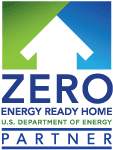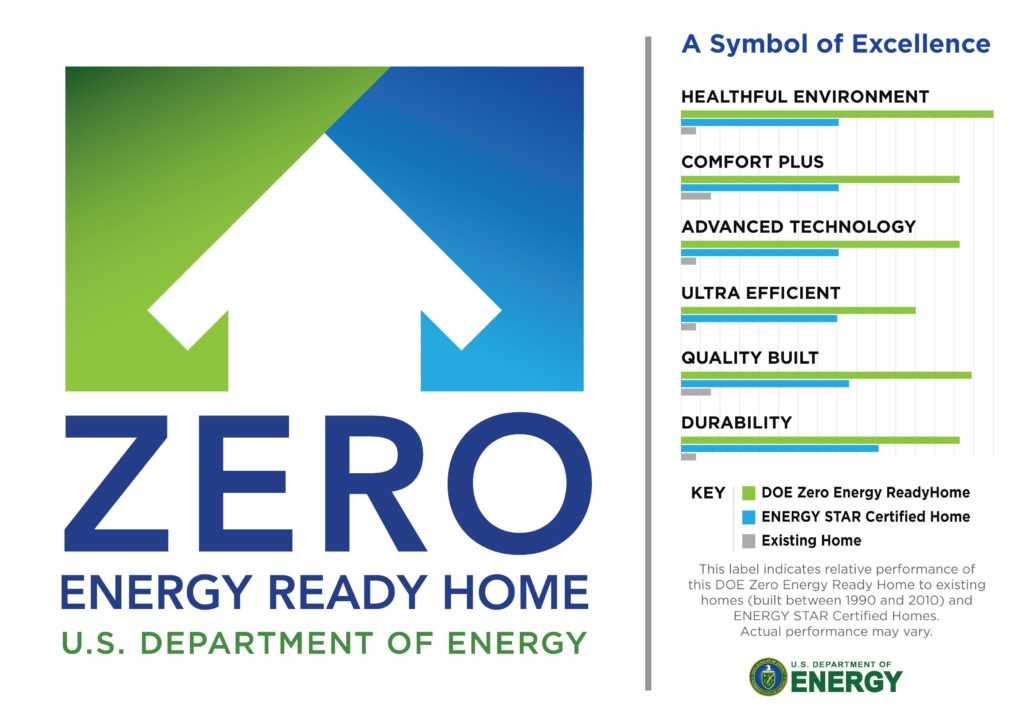

ZERO to HERO

In 2008, the U.S. Department of Energy launched the Challenge Home Student Design Competition wherein 28 teams from universities across North America took to developing new and innovative solutions to today’s top building issues. In the United States, 70% of all electricity consumed is used to power buildings. Encompassing everything from schools, restaurants, hospitals, homes and offices, more than $400 billion (that’s $400,000,000,000.00) a year goes toward powering these structures and it’s estimated that about 20% (or $80,000,000,000.00) is completely wasted.
The teams that won the 2008 and subsequent competitions used state-of-the-art materials and advanced techniques to produce zero energy ready homes. Today, the DOE has used these innovations to set up strict new standards and requirements for builders of tomorrow’s homes. The goal is to prepare for a net zero energy future, one in which homes and buildings are designed to reduce their energy consumption radically enough to be offset entirely by clean, renewable sources.

DOE 2014 Race to Zero Design Challenge. Photo by Dennis Shroeder
The mark of the Zero Energy Ready Home logo signifies a strong commitment to protecting the environment, creating jobs, and saving money and energy by building quality homes with high levels of comfort, efficiency and durability. It is no small measure which is why we are proud to announce that InSoFast has been accepted as Zero Energy Ready Home Partner. This certifies our high-performance panels as valuable component in a movement toward a cleaner, healthier, and more efficient future.
Zero Energy Ready Homes are rated for performance in six categories: comfort, indoor environment, durability, advanced technology, construction quality, and energy efficiency. In most categories, features of a home are compared to current conditions and standards like the 2009 IECC or Energy Star V3 and must greatly exceed those levels when compared on a 20-unit scale. These categories are rated and field-tested by an approved verifier in accordance with the Home Energy Rating System, or HERS Index.

HERS measures a home’s overall energy efficiency and performance through various factors like the amount of leaks in HVAC ducts or the building envelope, effectiveness of wall and ceiling insulation, or the performance of heating appliances. A lower number on the index implies a more energy efficient design. Most existing homes score around 130, newer homes 100. Zero Energy Ready homes must score in the mid- to low-50s.
The following is a key breakdown of of factors and criteria for each category. For more information, you can view the DOE’s 2012 label methodology report and the 2014 revised edition of the Zero Energy Home National Program Requirements.
1. Comfort Plus
This category is focused on measuring the quantity and quality of all comfort features. Features included in this analysis are thermal transmission details, sound dampening, air sealing and draft reduction, as well as hot water distribution. The top scoring potential in this category is recognized for homes that meet the Passive House Standard. Homes should be designed to produce even temperatures, low-humidity, and remain quiet throughout every room and floor.
2. Healthful Environment
Homes are judged based on the EPA’s Indoor airPlus Requirements which focus of factors that contribute to clean and healthy indoor environment. Factors include ventilation, moisture control, and airborne pollutant control.
3. Advanced Technology
This test looks for advanced systems used through the house that comply with top standards like and checklists. Some of the items counted are 2012 IECC insulation levels, ENERGY STAR windows and appliances, thermal enclosure and tight building envelope, beyond-code, lighting, and quality HVAC installation.
4. Durability
The goal is ensure a home is built with products and construction practices that contribute to a longer working life and higher disaster resistance. Additionally, homes should be able to meet and exceed future code requirements. It focuses on duct systems and water management systems that need less repair and maintenance as well as other systems that will not require extensive future retrofits.
5. Quality Construction
Similar to durability, this category is rated on a homes construction practices and judged by various checklists including a code inspection.
6. Ultra Efficient
Compared to a typical home, a Zero Energy Ready Home is inexpensive to own and maintain. To be minimally compliant across different climate zones and at different sizes, it must score an average HERS Index of 55.

